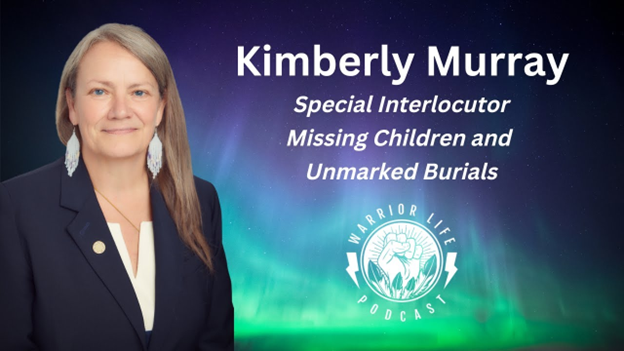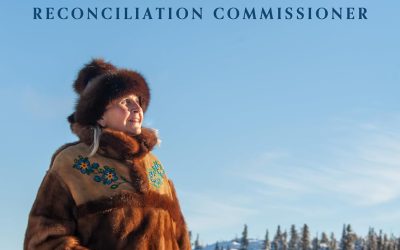The Office of the Special Interlocutor (OSI) has released its historical report (Sites of Truth, Sites of Conscience: Unmarked Burials and Mass Graves of Missing and Disappeared Indigenous Children in Canada).
While OSI states that “the primary purpose of this Report is not to prove that these atrocities happened or that Canada is responsible,” it also declares that “understanding the scope and scale of State wrongdoing and harms makes clear that there is an ongoing need for reparations relating to the missing and disappeared children and unmarked burials.”
How can reparations be assigned without determining responsibility?
The OSI sets the scale of reparations early on: “Thousands of children … were buried instead in cemeteries at the institutions, often in unmarked and mass graves that were sometimes dug by other children.” Not only were the residential schools scenes of genocide, a whole archipelago of institutions existed to service the “systemic settler colonial patterns of genocide.”
Kevin Annett first popularized characterizing the IRS as genocidal in the 1990s, which career activists have since reified. Venal self-interests aside, are there missing and disappeared children strewn about the Canadian landscape in unmarked burials and mass graves?
Special Interlocutor Kimberly Murray herself told the Senate Committee on Indigenous People: “There aren’t any missing children; they’re buried in the cemeteries. They’re missing because parents were never told where they were buried.”
To date, wherever the GPR suspected and detected the existence of unmarked burials, none have been confirmed by excavation.
The mention of ‘disappeared children’ is a new twist on the IRS-genocide narrative and conjures images of South American fascist regimes plunging citizens into their versions of Nacht und Nebel. However, like the report’s title, it is a trick of language meant to bait the credulous. The ‘disappeared’ in the OSI’s report are figurative.
“As victims of enforced disappearances, children were forcibly transferred between institutions and used as forced labour that the federal government authorized” (p.186). If children ended up at another location where they worked as labourers, how have they disappeared?
‘Forcible transfer’ is a recriminating refrain frequently repeated in the report. The phrase is meant to elicit the opinion that Canada and the churches breached Article II(e) of the UN Convention on genocide: Forcibly transferring children of the group to another group. The proof of intent is required to convict on genocide and proving intent has always been and remains lacking with regards to the claim of an IRS genocide. Consequently, activists like Murray stress the lethal systemicity of settler colonialism and an overriding ethos of racial superiority as proof of intent.
There has been no prosecution of any party for the violation of Article II(e) but we do know that the transfer was supposed to have been permanent. No ‘transfer’ to any IRS was permanent because, like any school, there were summer and Christmas breaks and students could graduate from the schools.
Often used interchangeably with ‘forcible transfer’ in the IRS-genocide narrative is the claim of ‘forced attendance.’ As much as the OSI uses language to indict the schools in popular imagination, the OSI trips over its own narrative. For example, OSI relates the experiences of Edith and James Moore (pp. 131-6) who married and had several children. After ‘escaping’ the File Hills Colony, they moved to Regina where their children were able to attend public school. Where is the forced attendance of residential schools?
Included in that multifarious forced transfer were children taken to residential schools for child welfare reasons. The report notes that by the 1960s, 50% of the children in residential schools were there for child welfare reasons. The idea that a genocidal system of schools would simultaneously be acting as provisional welfare agencies beggars belief.
The OSI report notes (p. 34): “From the beginning of the Indian Residential School System, church and government officials planned for the deaths and the burials of the children at their institutions.” Taken out of context, that fact seems shocking. “Who builds a school and puts a cemetery next to it?” Pragmatists who lived at a time when diseases killed many people and who were being realistic about the likelihood of students contracting fatal illnesses at the schools. Transporting a corpse hundreds of kilometers back to where the child came from wasn’t feasible.
The squirrelly Annettism of students’ babies being thrown into school incinerators makes an appearance in the report. Like the stories of witnessing murders and digging secret graves, the truth of the clandestine cremations is substantiated by how often former students repeat these tales. “There can be no denying the truthfulness of Survivors’ testimonies and oral histories about the incinerators due to the repetition and similarity amongst Survivors who were taken to the same institution.”
The report explains how oral testimony has a heritage of protocols to enforce truthfulness. Knowledge keepers said there were bodies buried at places like Camsell Indian Hospital and the church basement on Pine Creek First Nation. No human remains were found by excavation at either location. Why suppose oral testimonies are right about clandestine cremations in school incinerators?
The OSI, however, takes the absence of evidence as evidence of a crime: “The purposeful omission of written records has meant that search and recovery efforts to find the missing and disappeared children, including those burned in incinerators, requires the ongoing, urgent collection, and cross-referencing of oral history evidence.”
Prove staff did not willfully omit any records of a child no one can name.
Excusing the arson of some schools as “resistance,” the report tries to shift the blame: “Despite the fact that the loss of life in the Cross Lake fire was exacerbated by the building’s fire hazards and lax fire safety standards … the blame for the fire and the subsequent loss of life, was placed solely on the shoulders of two students.”
Remember, someone the Department of Justice Canada hired wrote this report.
Murray is stoking victimhood to jack up reparations.
Michael Melanson is a writer and tradesperson living in Winnipeg.



